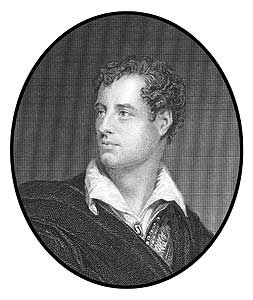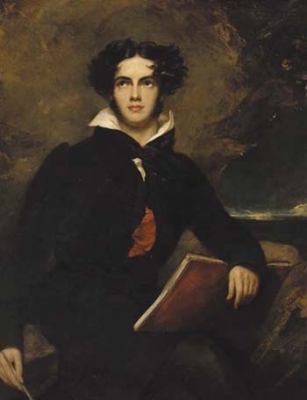
Written from Moore Place, Esher, the letter reads in part, "Dear Sir, I am much obliged to you for offering to look for another young Teacher in place of the one who is engaged, but I have no difficulty in finding a Substitute. With an autograph letter signed by Lady Byron bound into the first volume.
Byron king noel viscount ockham full#
Volume one was produced in quarto format and the subsequent 5 volumes in octavo (Davison abandoned the quarto format after disappointing sales of the first volume), six volumes uniformly bound in full morocco with gilt titles and tooling to the spine, double gilt ruling to the front and rear panels, gilt inner dentelles, marbled endpapers, all edges gilt. Scarce complete first edition set of Byron's great work which was widely criticized as immoral upon publication and is now considered one of the greatest poems of the Romantics from the library of American writer Erica Jong. Not published in Marchand's edition of Byron's Letters and Journals (1973-1994). They set sail once again on 24 July, and finally reached Cephalonia on 2 August.

During the couple of days spent at Leghorn, Byron received a verse-tribute from Goethe and dashed off his famous reply: "I sailed from Genoa some days ago - was driven back by a Gale of Wind - and have since sailed again - and arrived here (Leghorn) this morning to receive on board some Greek passengers for their struggling country" (22 July 1823). They eventually set sail from Genoa on the 16th. During the delay he went on shore again to visit the house outside Genoa that he had shared with Teresa as her brother recalled: "His conversation was somewhat melancholy on our way to Albaro, he spoke much of his past life, and of uncertainty of the future, 'where', said he, 'shall we be in a year?'" (quoted by Leslie A. By some accounts, his mood at this time was despondent, almost fatalistic. However, his departure was to be delayed by calms, and then a storm. Byron was to bid farewell to Teresa and board the "Hercules" on 13 July. (II) In the second (July 9), stating that in order not to lose a moment of his time, he has resolved not to make a stop at Leghorn except to take him on board along with an other English gentleman (James Hamilton Browne), and asking Vitali to tell his compatriots to have any despatches and instructions relating to his mission ready for his arrival. (I) In the first letter (July 7), Byron is rescheduling his departure to July 12: " Capisco che il momento del forte conflitto è giunto ". Their addressee is the Greek patriot Giorgio Vitali (1776-1854) at Leghorn, from an ancient Venetian family and the commander of the Ionic vessel "Hercules" that Byron wanted to take. These two evocative letters, written in Italian and in the hand of Count Pietro Gamba (the brother of his beloved Teresa Guiccioli), were written while Byron was making his final preparations for his voyage to Greece, where he was to die nine months later "that Greece may still be free". Randolph, Studies for a Byron Bibliography, page 119 Tinker 552 Wise, Byron, page 50 ("practically impossible to acquire") NCBEL III, 282 First edition, privately printed in an edition of 50 copies, of which about 14 are known to survive.Ĥto. First leaf torn and neatly repaired without loss to text (but touching the final three lines on the first page) a few carefully repaired tears to the outer margins very good copy, enclosed in a quarter morocco clamshell box.
Byron king noel viscount ockham archive#
Surviving copies are recorded at the British Library, National Library of Scotland Leeds NYPL Huntington Beinecke Illinois Princeton and the John Murray Archive the locations are not recorded (though could be one of those listed above) for the five copies which have sold at auction in the past 50 years. On ApByron sent the manuscript to printer Thomas Davison with a hurriedly written note, instructing him to print 50 copies on quarto paper (see Tinker 492).

The first edition of one of the iconic poems of the Romantic era, written by Lord Byron upon the tearful breakup of his marriage to Annabella Milbanke and just before he left England, never to return.

Single bifolium, four 25 x 19 cm (9.75 x 7.75 inches) pages, text on pages 1-3 page 4 is blank.


 0 kommentar(er)
0 kommentar(er)
